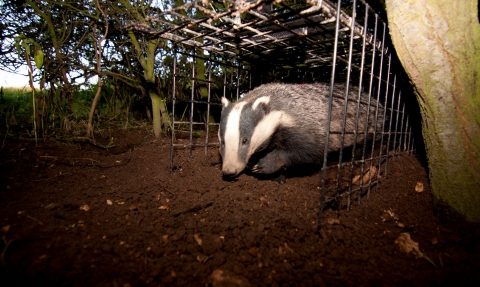
WildNet - Tom Marshall
Badgers and bovine Tuberculosis (bTB)
Dorset Wildlife Trust is opposed to badger culling
Bovine Tuberculosis (bTB) is one of the biggest challenges facing cattle farmers today, costing the UK tens of millions of pounds every year. We have a great deal of sympathy for farmers who lose stock as a result of bTB and we are acutely aware of the problems this disease causes in Dorset. We are very keen to see the eradication of bTB and want to see an effective solution based on scientific advice and evidence.
Badgers do carry bTB and can transfer it to cattle, but badger culling is not the solution. The scientific evidence demonstrates that culling is likely to be ineffective in fighting the disease and risks making the problem even worse. Badgers are not the primary cause of the spread of bTB in cattle: the primary route of infection is via cow-to-cow contact and a vaccine for cattle should be a priority. UK Cattle are already vaccinated for up to 16 diseases so why should bTB be different?
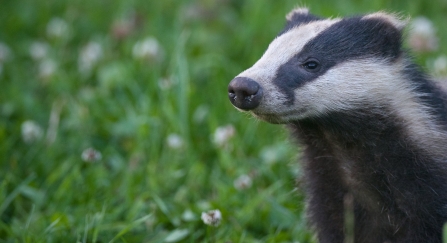
European badger (Meles meles) cub sniffing the air, Summer, Dorset, United Kingdom © Bertie Gregory/2020VISION
About bovine tuberculosis (bTB)
Bovine tuberculosis is a highly infectious disease of cattle which devastates thousands of farming businesses annually. It is caused by the bacterium Mycobacterium bovis, which can also infect and cause TB in badgers, deer, goats, pigs and many other mammals. It is a chronic disease which can take years to develop. Since the mid-1980s, the incidence of bTB in cattle has increased substantially creating an economic burden on the taxpayer and the farming industry, as infected cattle must be culled. Cattle grazing is vital for many wildlife habitats. We work closely with local farmers and manage our own herd too.
Government research shows that bTB is not a major cause of death in badgers. Generally, infected badgers do not show any sign of infection and can survive for many years before suffering from severe emaciation. Usually they die from other causes before this happens.
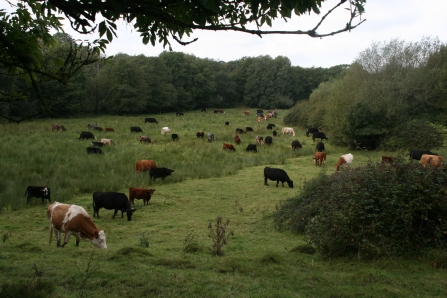
Cattle at Kingcombe © Tony Bates
How is bTB spread?
The spread of bTB is primarily through the exchange of respiratory secretions between infected and uninfected animals. This transmission usually happens when animals are in close contact with each other. Cattle-to-cattle transmission is a serious cause of disease spread which is substantiated by scientific evidence. Badgers also suffer from TB and are able to transmit the disease to cattle. Farmers are required by law to have their cattle regularly tested for bTB. A positive test for bTB will result in herd movement restrictions and the slaughter of affected cattle. Around 33,000 cattle were slaughtered for bTB control in England in 2017.
Badgers live in social groups with stable boundaries between groups. If a group is removed by culling, this disturbs the stability and there are likely to be changes in movement patterns of neighbouring groups. This increases the risk of infected animals moving into areas previously occupied by uninfected animals. This is referred to as ‘perturbation’.
Badger culls and the scientific evidence
Badgers are being culled as part of a government initiative to reduce the spread of bovine tuberculosis (bTB) in cattle. “Pilot” badger culls commenced in 2013 in Gloucester and Somerset amid much opposition. More than 300,000 people supported a petition opposing the cull. An Independent Expert Panel (IEP) was appointed by Defra to assess the effectiveness, humaneness and safety of the 2013 culls. The panel deemed the culls 'ineffective' and 'inhumane' in 2013, with no significant improvement - and further failures - in 2014.
Despite two parliamentary debates, a prominent opposition campaign and the support of numerous experts and high profile figures, the number of areas increased in 2015 to include Dorset. In 2016, 2017 and 2018 the Government announced further cull licences, including several in Dorset bringing the total number of badger cull areas to 32, in 10 counties. At least 32,601 badgers were culled in 2018 in England. This divisive and emotive issue has divided the county with strong views on all sides.
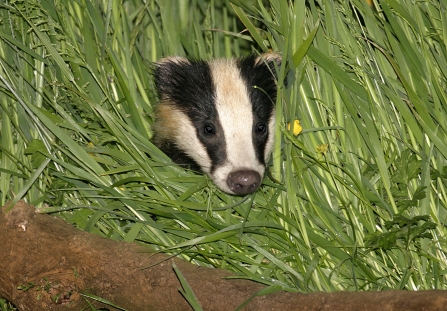
Badger Copyright Wild Stock
What needs to happen
We believe an evidence-based and scientifically reliable approach must be developed to counteract the risk posed to cattle by bTB.
- Accelerate progress on cattle vaccination
Cattle vaccination offers the best long-term way to reduce bTB. - Reduce cow-to-cow infections - the major cause of TB infection
The risk of spreading disease when cattle are transported can be minimised by tightening movement controls even further. Better testing can help pick up more animals at an early stage of infection, which are sometimes missed by current tests. - Ensure higher standards of biosecurity on farms
bTB transmission may occur via contaminated pasture or around farm buildings. A study by the Food and Environment Research Agency concluded that exclusion measures can be 100% effective in preventing badgers entering farm buildings when deployed properly. - Help to roll out badger vaccinations
Vaccination of badgers and cattle has the potential to reduce bTB without the negative impacts of perturbation arising from a badger cull. Badger vaccination is far cheaper than culling.
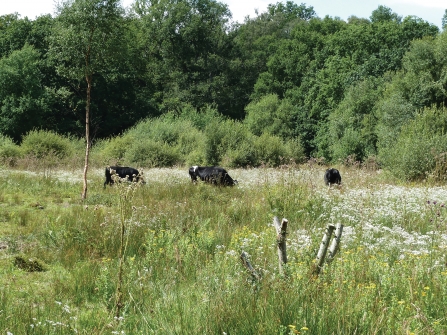
Grazing cattle at Bugden's Meadow
Badger vaccination
Badger vaccination involves adult badgers and cubs being humanely trapped and vaccinated by trained and licensed people, revisiting the same area for several years to ensure the majority of the local badgers have been vaccinated. In a clinical trial, the vaccine reduced the risk of vaccinated badgers testing positive for progressed infection by 76% and reduced the risk of testing positive to any of the available live tests of infection by 54%. The trial also found that when more than a third of the badger social group was vaccinated it even protected unvaccinated cubs – their risk of infection reduced by 79%. Badger vaccination alone is not the solution to bTB, but it does have an immediate positive effect with no known associated negative impact on badgers or cattle.
We commenced badger vaccination on nature reserves in 2013. We hope our work will contribute to the local control of bTB in cattle by creating immunity in a population of Dorset badgers and explore the practicalities of vaccination usage in the field, thus supporting local farmers whilst protecting badgers.
The Wildlife Trusts have been working on the issue of bovine TB and its links to badgers for many years. We act based on robust scientific analysis and we believe that the distress of bovine TB will not be eradicated by a badger cull. It is not the answer for badgers or farmers and we call on the government to focus on a more durable and resilient strategy to reduce bovine TB.
